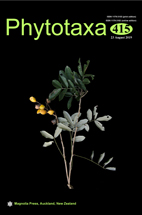Abstract
The largest sedge (Cyperaceae) genus Carex Linnaeus (1753: 972) consists of ca. 2000 species worldwide (Reznicek 1990; Global Carex Group 2016). In India, 142 species of the genus were reported by Clarke (1894) and ca. 73 species are restricted to the North-Eastern part of India and Bhutan (Noltie 1993, 1994). The most recent estimate of the genus Carex of the Indian subcontinent, given by Govaerts et al. (2019+), is 219, however, in the Eastern Himalaya (EHM abbreviation according to Brummitt, 2001) the number of species is 122; 23 of which are endemic (Govaerts et al. 2019+). The name Carex polycephala Boott (1858: 4) has been applied to the species initially placed within the section or subgenus Carices Hymenochlaenae (Drejer 1844: 10) and subsequently in the subgenus Carex sect. Hymenochlaenae (Drejer) L. H. Bailey in Coulter (1885: 379); subgenus Carex sect. Hymenochlaenae subs. Longirostres Kükenthal (1909: 604). Mackenzie (1935: 297) raised its rank from subsection to sect. Longirostres and subsequently accepted by Hermann (1944: 148). The species is endemic to the Eastern Himalayas (Noltie 1993, 1994) and Sikkim and Assam (Kükenthal 1909). On the basis of previous morphological studies, the section Hymenochlaenae Drejer (1844) was considered as heterogeneous as was projected earlier by Ascherson & Graebner (1902-1904) and Mackenzie (1935). Members of the section are nested within multiple clades and considered as taxonomic dumping ground for “orphan” species (Global Carex Group 2016). Liang et al. (2010) considered the species as unranked “Taxa incertae sedis”. The species has not yet been evaluated in phylogenetic studies.

